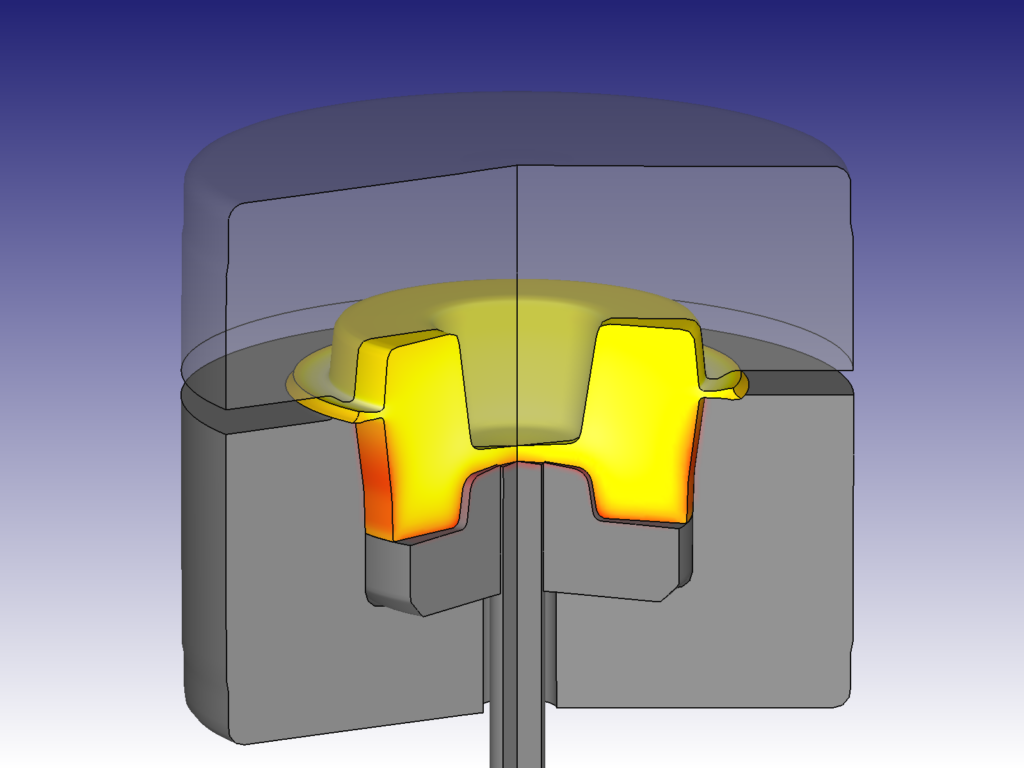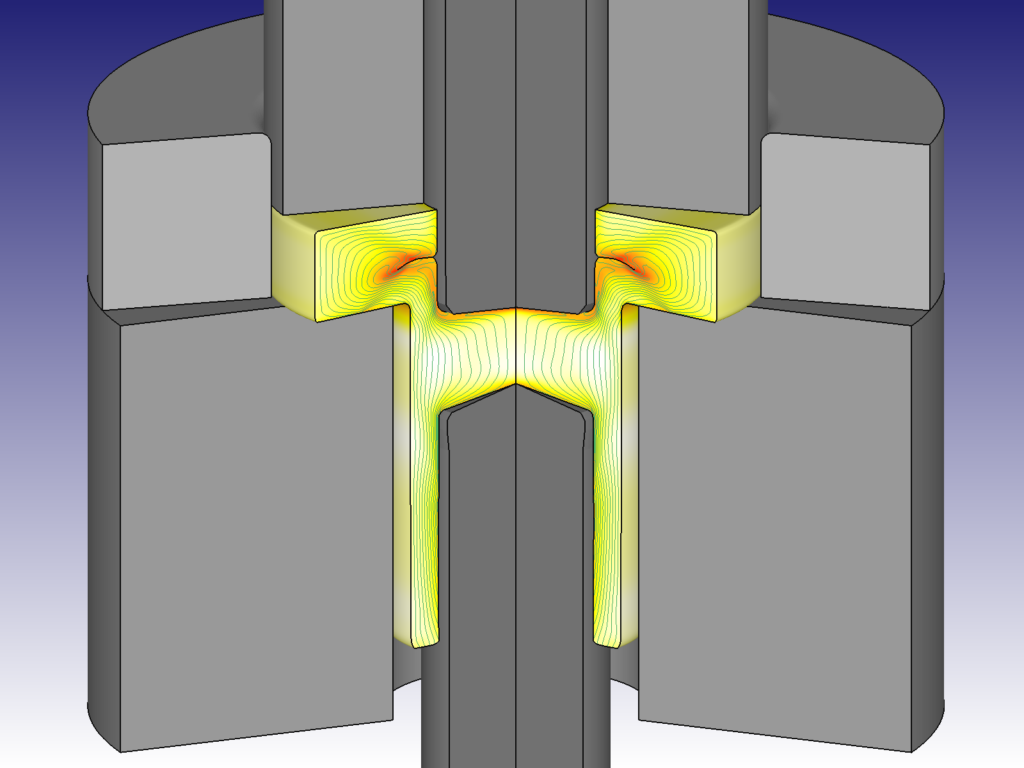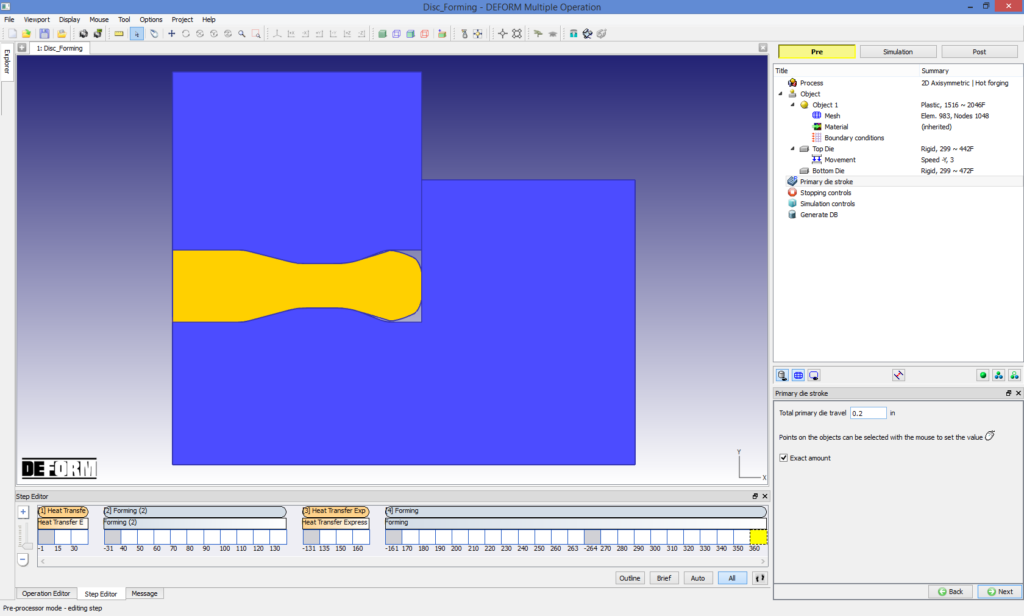FORMING EXPRESS (2D) is an easy-to-use process simulation system designed to analyze two-dimensional (2D) material flow and heat transfer in metal forming processes. Applications include hot forging (closed and open die), warm and cold forming, extrusion, drawing and more. 2D simulation is particularly efficient for processes that can be described by an axis of symmetry. Disks, hubs, shafts, flanges, fasteners and bearings are regularly simulated using FORMING EXPRESS.
FORMING EXPRESS shares the system architecture, mesh generator and FEM engine of DEFORM-2D, the advanced 2D process simulation system. The simulation engine is capable of analyzing complex interactions between a workpiece, dies and forming equipment. Production metal forming process can be realistically modeled with high accuracy. The sophisticated mesh generator automatically creates an optimized mesh whenever necessary, without user interaction.

While FORMING EXPRESS provides sophisticated analysis capabilities, the graphical user interface is intuitive and easy to learn. A ‘state of the art’ multiple operation interface allows individual operations to be combined into process sequences that can be run one-by-one or sequentially. The system guides a user through data preparation, but also allows direct access to modify parameters or review results.
Scientific Forming Technologies Corporation (SFTC) staff has a unique combination of industrial, academic and software experience. This diverse background enables SFTC to provide unparalleled training and technical support. Our support staff is personally committed to the success of each and every DEFORM user.


Product Specifications
- Deformation and heat transfer are calculated in an integrated simulation environment.
- 2D axisymmetric or plane strain models are supported.
- Automatic, adaptive remeshing is performed during simulations.
- Forming equipment models are available for hydraulic, screw and mechanical presses and hammers.
- Speed, load and sliding die (spring) controlled translational movements are also supported.
- Material models include rigid-plastic for cold forming, thermal rigid-viscoplastic for hot forging and elastic for die stress analysis.
- A wizard-based user interface allows for fast and efficient data preparation.
- Multiple operation sequences run without user intervention.
- Simulation results are analyzed via a powerful post-processor.
